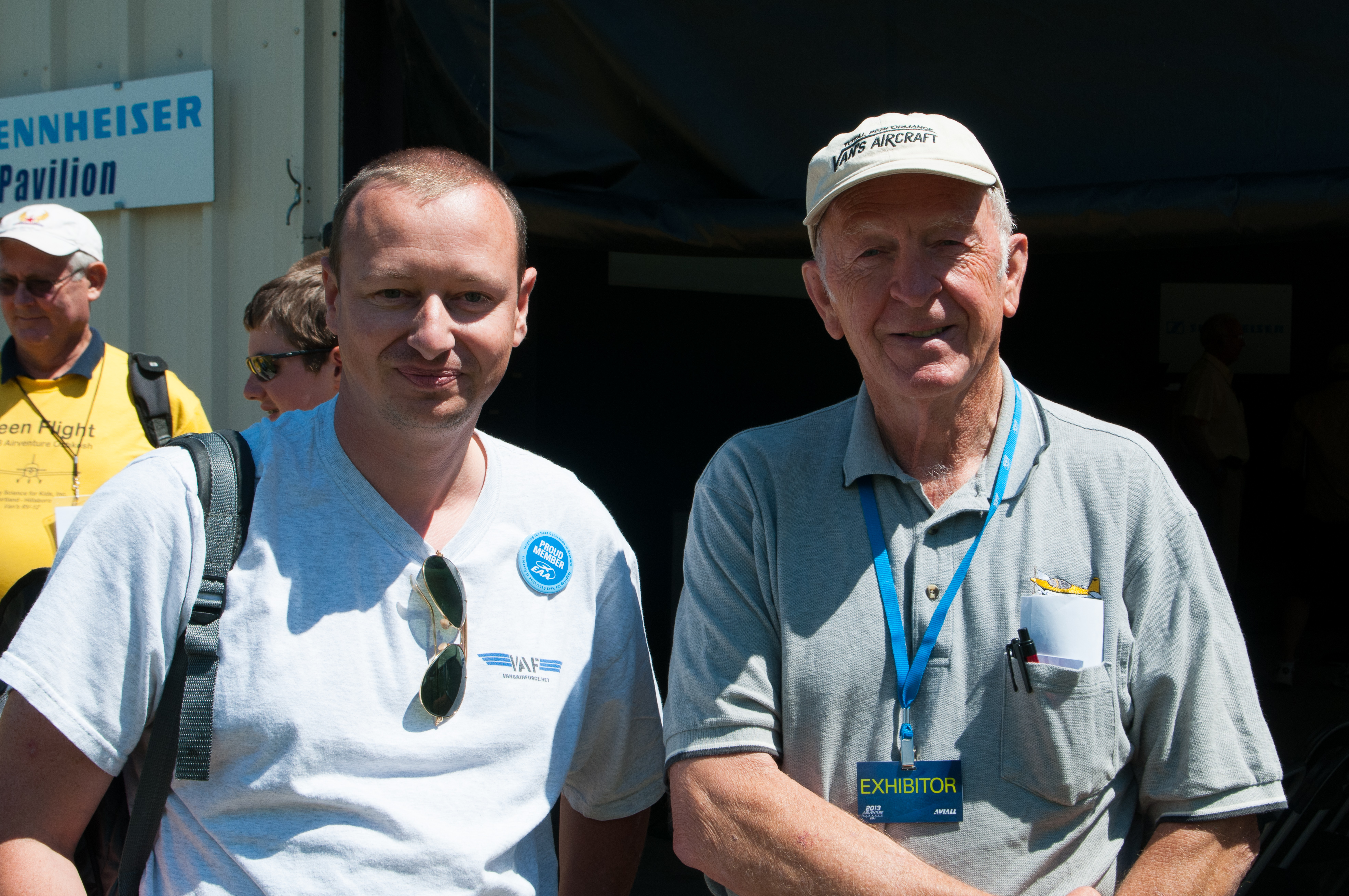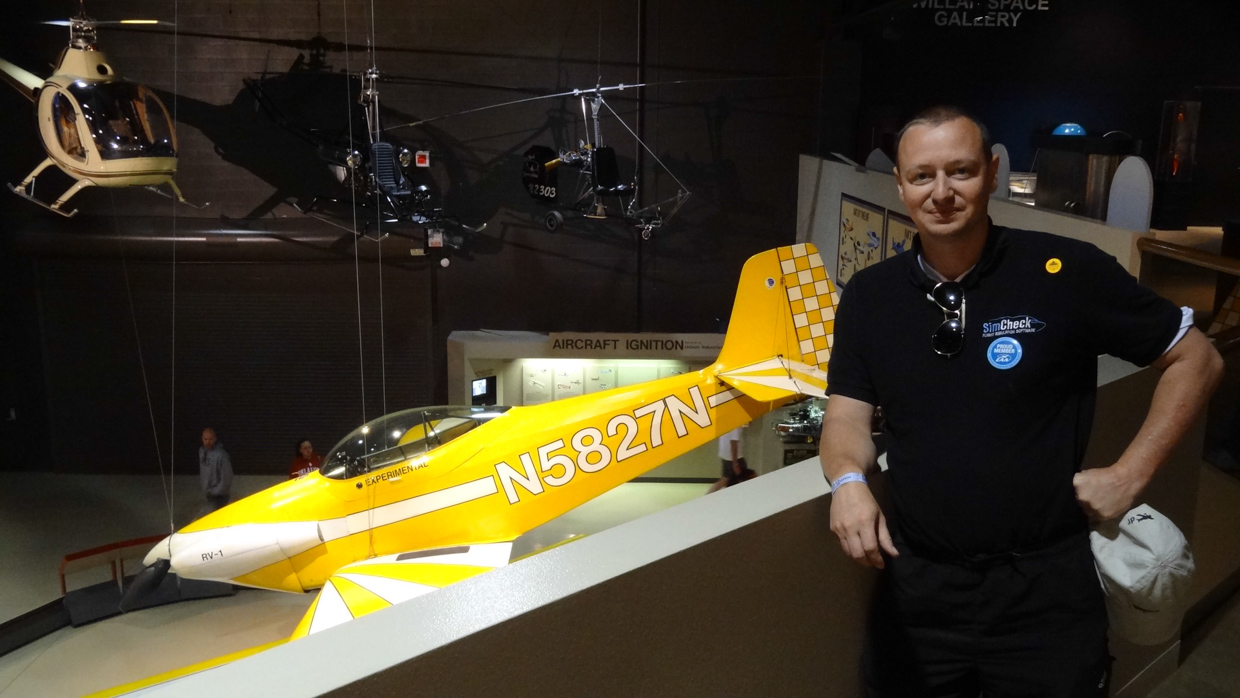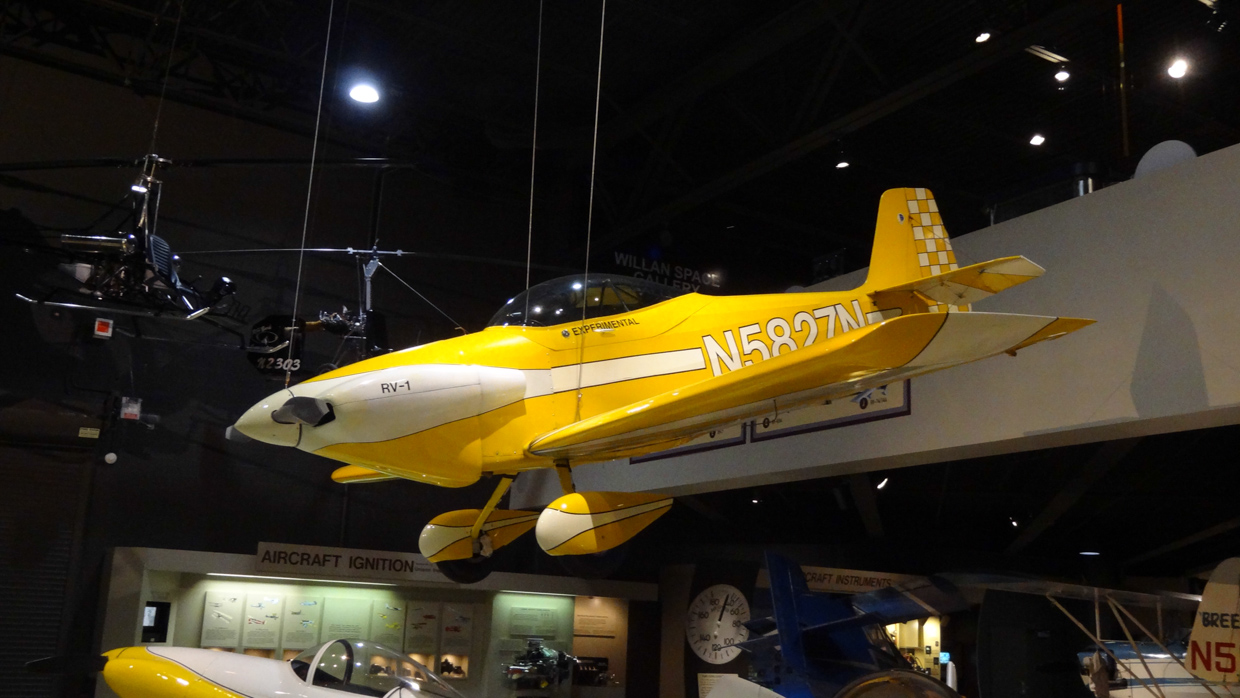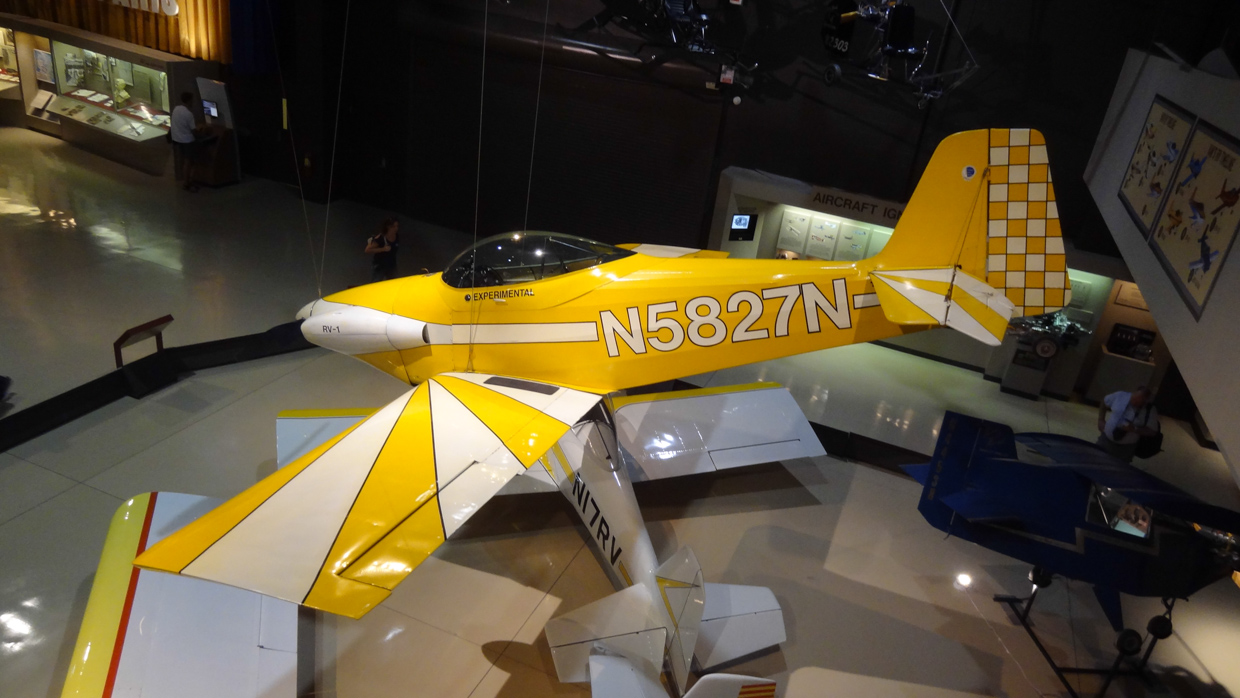At the Oshkosh airventure 2013, I took this cool shot with Richard VanGrunsven, founder and CEO of Van's aircraft. We had a short chat after he came out of a presentation where he attended putting the young eagles project in the spotlights.
Richard -usually known as "Dick" or "Van" was born in 1939 and became an American aircraft designer and kitplane manufacturer. These days his kits are so popular that the number of VanGrunsven-designed homebuilt aircraft produced each year in North America exceeds the combined production of all commercial general aviation companies.
The initials "RV" usually mean Recreational Vehicle, and while that may be an apt description of the RV line of kit aircraft in this case they are also the initials of designer and founder of Van's Aircraft, Richard VanGrunsven. Richard learned to fly in 1956 at the age of 16. He has logged 12,000+ hours (the majority of it in airplanes of his own design) and holds CFI, multi-engine and ATP ratings.
Throughout high school and college years he flew a Cub and a Taylorcraft from the 670' grass strip on his parents' farm near Cornelius, Oregon. He flew as a respite from long weekends of academic study and for the sheer joy of it. Noteworthy pioneers of experimental aviation, George Bogardus and Hobie Sorrell, lived nearby and had private airstrips that enabled Van to visit regularly. The information he gleaned from them and others became the basis of his later vocation.
After finishing college with a degree in engineering, he joined the Air Force for a three year tour. He served as a communications officer because a slight color vision problem prevented his acceptance in the pilot training program. He remained active in flying, becoming a key figure in the base flying club. While serving in Michigan, he purchased a homebuilt 65 hp Stits Playboy. Although it looked sporty, its performance was poor. He rebuilt it, installing a 125 hp Lycoming engine, bubble canopy, and Hoerner style wingtips. The modified airplane flew much better, but still had a high landing speed, high sink rate, and only moderately good cruise speed. Clearly, he reasoned, horsepower was no longer the problem, so the remaining drawbacks must be the result of an inefficient airframe.
Within a year of returning to civilian life, now employed as a mechanical engineer, he had designed, built and installed a set of cantilever aluminum wings to replace the strut-braced wood and fabric originals. Renamed the RV-1, the Playboy flew like a new airplane. The wings were equipped with flaps to provide the short landing performance required for operation from the family farm. His friends joked that the only reason "that cheap Dutchman" rebuilt the Playboy was to be able to keep it at home and avoid hangar rent. Whatever the reason, it was the beginning of the RV designs.
Van flew the RV-1 from 1965 through 1968 and enjoyed its performance immensely, but he was aware that its hybrid heritage limited its performance and felt something better was possible. He wanted an airplane that was able to fly in and out of any reasonable airstrip, with enough power and maneuverability to do good basic aerobatics, and cruise as fast as possible. (This may not seem to be a particularly inspired goal, but consider for a minute how few airplanes actually achieve it.) He reluctantly sold the RV-1 (it is still on the active registry) and began design and construction of a completely original airplane.
The RV-1 was recently donated to the EAA airventure museum at Oshkosh where I took the picture below just after it was added to the Vans aircraft exhibition stand. The airplane had made its way around the United States on a tour that began at Sun 'n Fun in April. It flew up the East Coast, over the border to and across Canada, and back down across the West Coast before making its way to Oshkosh.
The single-seat RV-3 flew for the first time in August 1971 and proved to be a delightful airplane -- an improvement in every way over the RV-1. Shortly thereafter, he started his own business, providing parts, plans and very basic kits for the RV-3.
Over the next forty years, Van’s Aircraft became the acknowledged leader in the kit aircraft world. New aircraft, from the RV-4 through the Light Sport RV-12, have been introduced and each has proven successful in the marketplace. For most of that time, Van was chief engineer, head designer and CEO of the company.
Today (forty years after the first flight of the RV-3), Van continues to lead the company he founded. Although his old titles are held by others, it’s still his name over the entrance. He commutes to his desk in the engineering office (no private cubicle, no executive washroom, no reserved parking spot) every day. If the weather permits, he flies to work in his original RV-4 – or his RV-10 – or the new RV-12 he and his brother Jerry built, just for fun.
Well, almost every day. If the soaring conditions are good, he pulls out his all electric self-launching Antares sailplane, takes a few days off…
And goes flying.




